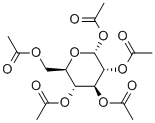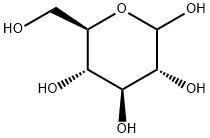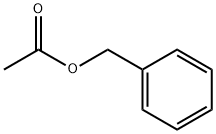Glucose pentaacetate
Synonym(s):1,2,3,4,6-Penta-O-acetyl-α-D -glucopyranose
- CAS NO.:604-68-2
- Empirical Formula: C16H22O11
- Molecular Weight: 390.34
- MDL number: MFCD00064071
- EINECS: 210-073-2
- SAFETY DATA SHEET (SDS)
- Update Date: 2024-12-18 14:15:32

What is Glucose pentaacetate?
Chemical properties
white to light yellow crystal powde
The Uses of Glucose pentaacetate
D-Glucose pentaacetate was reported to stimulate insulin release in rat pancreatic islets. Only α-D-glucose pentaacetate caused an immediate increase in insulin output. The β-anomer of D-glucose pentaacetate first transiently inhibited insulin release, this initial effect being followed by a secondary rise in secretory rate.
What are the applications of Application
α-D-Glucose Pentaacetate is shown to cause an immediate increase in insulin output
What are the applications of Application
Glucose-penta-acetate is a bitter principle in food products, mainly spice blends, condiments, alcoholic beverages, etc. The concentration is equivalent to about 100 to 1500 ppm in the finished consumer product.
Purification Methods
Crystallise it from MeOH, EtOH or three recrystallisations from 95% EtOH. [Wolfrom & Thompson Methods in Carbohydrate Chemistry II 212 1963, Academic Press, Beilstein 17/7 V 318.]
Properties of Glucose pentaacetate
| Melting point: | 111-113 °C |
| alpha | 97 º (c=1, CHCl3) |
| Boiling point: | 435.58°C (rough estimate) |
| Density | 1.3984 (rough estimate) |
| vapor pressure | 0-0Pa at 20-50℃ |
| FEMA | 2524 | GLUCOSE PENTAACETATE |
| refractive index | 105.5 ° (C=1.5, MeOH) |
| storage temp. | Sealed in dry,Room Temperature |
| solubility | chloroform: 0.1 g/mL, clear, colorless |
| form | Powder |
| color | White to off-white |
| Odor | at 100.00 %. odorless |
| optical activity | [α]20/D ≥+98°, c = 1 in ethanol |
| Water Solubility | < 5 G/L (25 ºC) |
| BRN | 98852 |
| CAS DataBase Reference | 604-68-2(CAS DataBase Reference) |
| NIST Chemistry Reference | «alpha»-D-Glucopyranose, pentaacetate(604-68-2) |
| EPA Substance Registry System | .alpha.-D-Glucopyranose, pentaacetate (604-68-2) |
Safety information for Glucose pentaacetate
| Signal word | Warning |
| Pictogram(s) |
 Exclamation Mark Irritant GHS07 |
| GHS Hazard Statements |
H302:Acute toxicity,oral H315:Skin corrosion/irritation H319:Serious eye damage/eye irritation H335:Specific target organ toxicity, single exposure;Respiratory tract irritation |
| Precautionary Statement Codes |
P261:Avoid breathing dust/fume/gas/mist/vapours/spray. P305+P351+P338:IF IN EYES: Rinse cautiously with water for several minutes. Remove contact lenses, if present and easy to do. Continuerinsing. |
Computed Descriptors for Glucose pentaacetate
Glucose pentaacetate manufacturer
Siri Organics
Anand Agencies
New Products
(S)-3-Aminobutanenitrile hydrochloride 4-Methylphenylacetic acid N-Boc-D-alaninol N-BOC-D/L-ALANINOL Tert-butyl bis(2-chloroethyl)carbamate 3-Morpholino-1-(4-nitrophenyl)-5,6-dihydropyridin- 2(1H)-one Furan-2,5-Dicarboxylic Acid Tropic acid 1-Bromo-3,5-Di-Tert-Butylbenzene S-2-CHLORO PROPIONIC ACID ETHYL ISOCYANOACETATE 2-Bromo-1,3-Bis(Dimethylamino)Trimethinium Hexafluorophosphate 4-IODO BENZOIC ACID 3-NITRO-2-METHYL ANILINE 1-(2,4-DICHLOROPHENYL) ETHANAMINE (2-Hydroxyphenyl)acetonitrile 4-Bromopyrazole 2-(Cyanocyclohexyl)acetic acid 4-methoxy-3,5-dinitropyridine 1-(4-(aminomethyl)benzyl)urea hydrochloride 2-aminopropyl benzoate hydrochloride diethyl 2-(2-((tertbutoxycarbonyl)amino) ethyl)malonate tert-butyl 4- (ureidomethyl)benzylcarbamate Ethyl-2-chloro((4-methoxyphenyl)hydrazono)acetateRelated products of tetrahydrofuran








You may like
-
 α-D(+)-Glucose pentaacetate, 99% CAS 604-68-2View Details
α-D(+)-Glucose pentaacetate, 99% CAS 604-68-2View Details
604-68-2 -
 Penta-O-acetyl-α-D-glucopyranose CAS 604-68-2View Details
Penta-O-acetyl-α-D-glucopyranose CAS 604-68-2View Details
604-68-2 -
 a-D-Glucose Pentaacetate CAS 604-68-2View Details
a-D-Glucose Pentaacetate CAS 604-68-2View Details
604-68-2 -
 α-D(+)-Glucose pentaacetate CAS 604-68-2View Details
α-D(+)-Glucose pentaacetate CAS 604-68-2View Details
604-68-2 -
 1975-50-4 98%View Details
1975-50-4 98%View Details
1975-50-4 -
 2-HYDROXY BENZYL ALCOHOL 98%View Details
2-HYDROXY BENZYL ALCOHOL 98%View Details
90-01-7 -
 14714-50-2 (2-Hydroxyphenyl)acetonitrile 98+View Details
14714-50-2 (2-Hydroxyphenyl)acetonitrile 98+View Details
14714-50-2 -
 118753-70-1 98+View Details
118753-70-1 98+View Details
118753-70-1